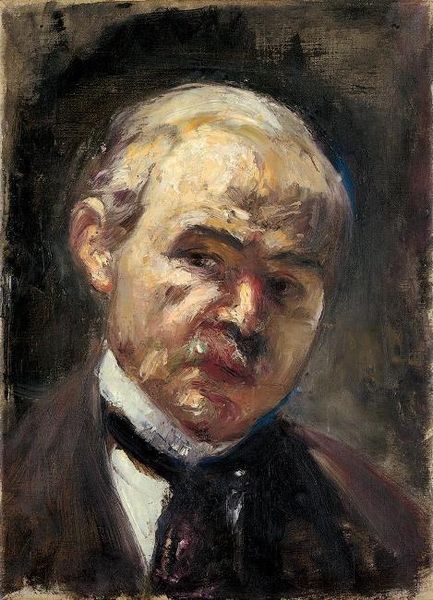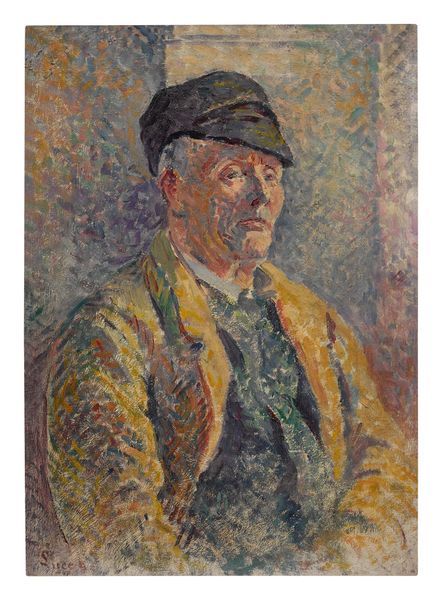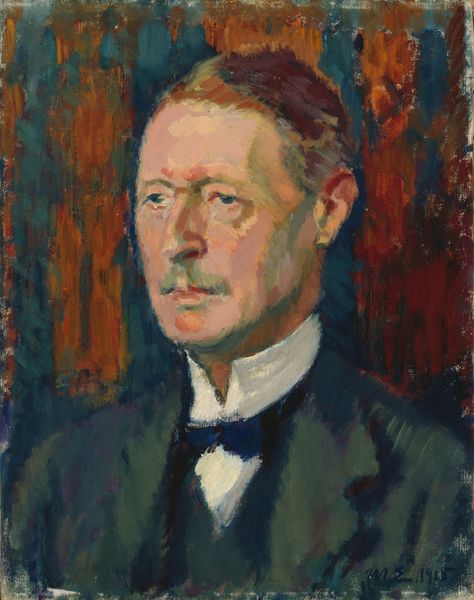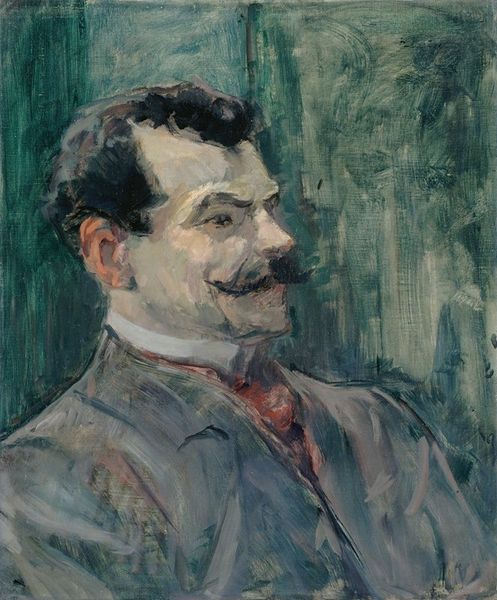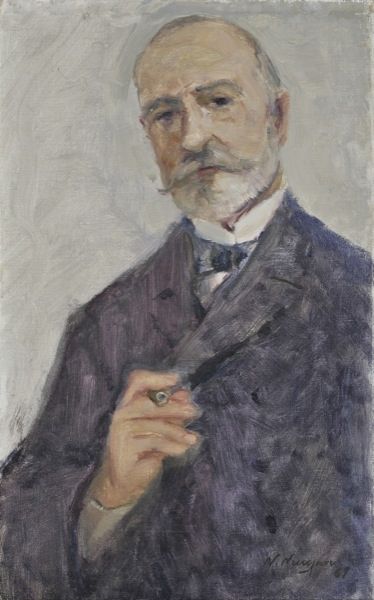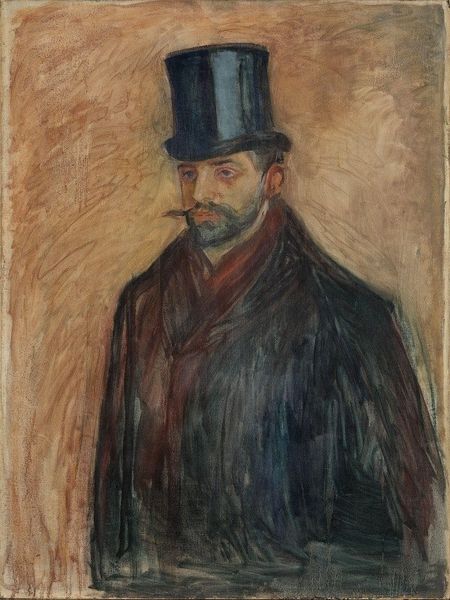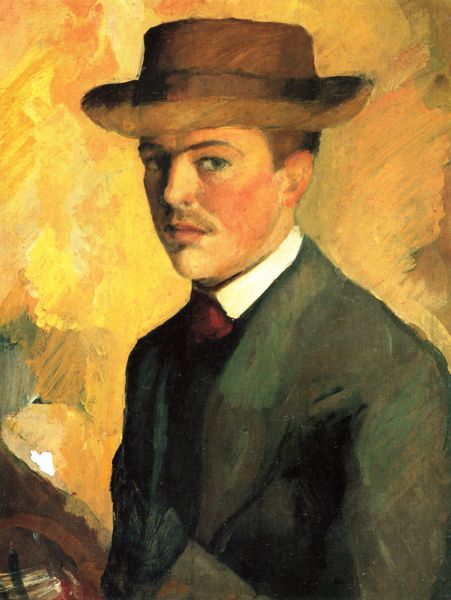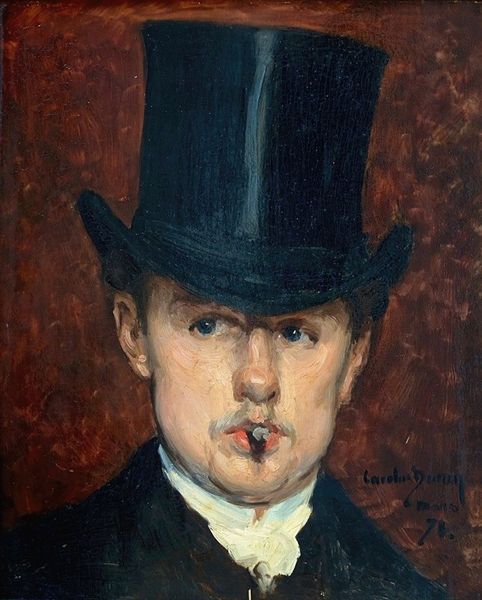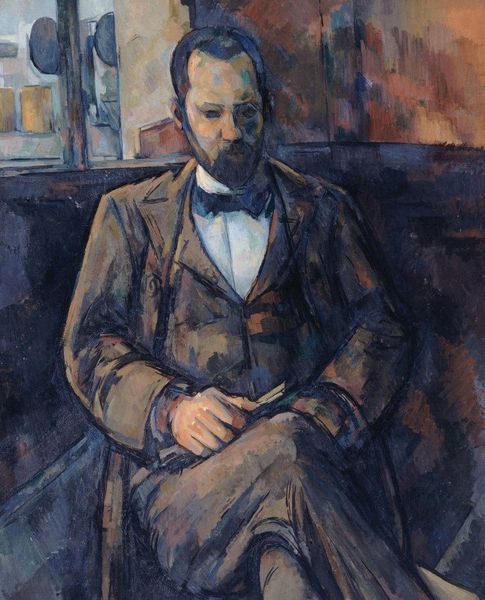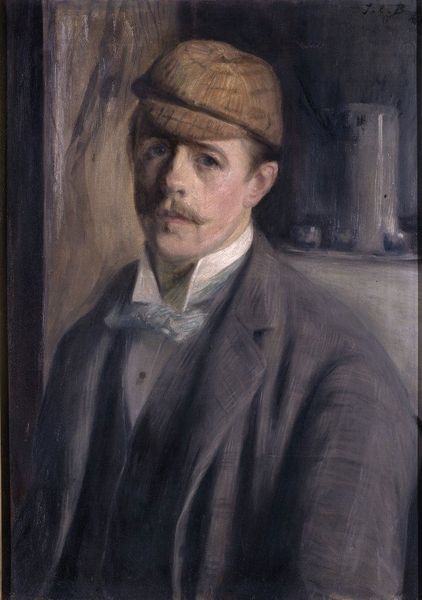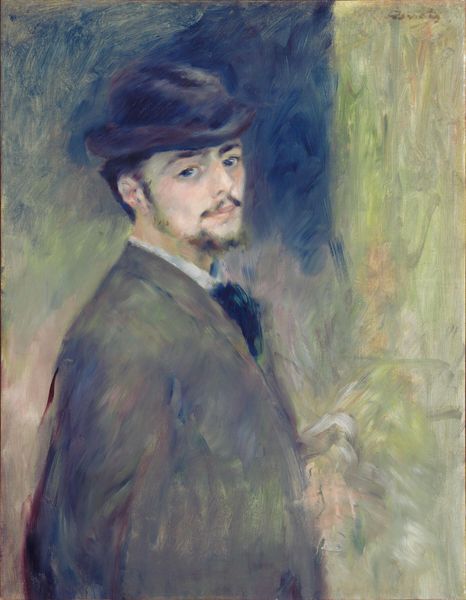
Copyright: Public domain
Editor: So, this is Robert Harris’s *Self-Portrait* from 1908. It's oil on canvas. There's something so compelling about a self-portrait, isn’t there? I find it contemplative and intimate, despite the formal bowler hat. What do you see in this piece? Curator: The bowler hat is fascinating, isn’t it? It speaks volumes about societal roles and identity. Note the haziness and obscured gaze. Consider how portraiture has always served to construct identity, especially for the bourgeois. Do you think Harris is revealing or concealing himself here? What's the psychology behind this conscious image making? Editor: That’s a great point about societal roles. Maybe the vagueness softens the artist's ego and opens it up to viewers? It is like Harris is looking at himself, but also encouraging viewers to look at themselves. I see him playing with ideas of memory here as well - what details he decides to hold onto in this representation of self, and what he obscures and chooses to forget. Curator: Precisely! Notice how the blending colours also suggest a world that isn't perfectly in focus. I would even argue that the haziness lends an air of timelessness and speaks to universal experiences of the Self and, beyond this, speaks to memory and legacy, asking how does he want to be remembered. Editor: This was insightful - thanks! I’ll definitely remember this context as I continue my studies. Curator: A pleasure - art history is a perpetual exploration of the ever changing "self," you have much to explore.
Comments
No comments
Be the first to comment and join the conversation on the ultimate creative platform.


